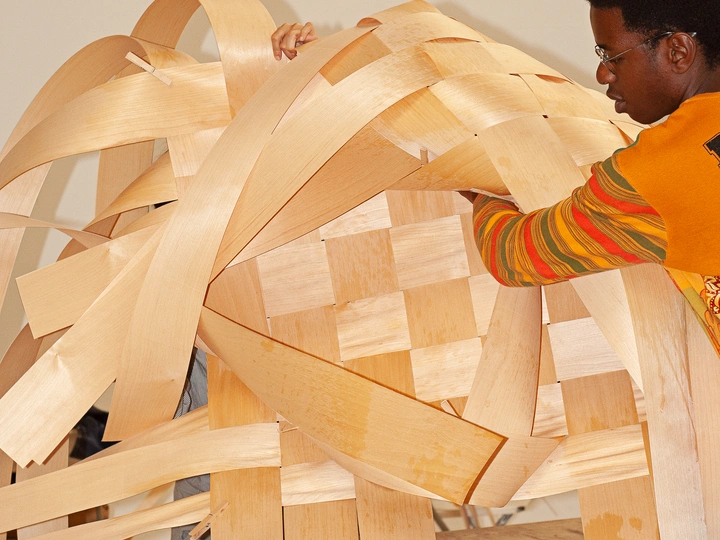Liquid Pedagogies:Learning from the Designed Realm

Mayrit is an independent biennial of design and architecture based in Madrid. It acts as a living platform for emerging voices and experimental practices. The initiative was founded by Miguel Leiro and is curated with a rotating team of designers, curators, and thinkers from Spain and Ibero-America. Past editions have tackled theoretical frameworks like "Los Mundos Sumergidos" (2022) and "Wet Dreams" (2024), the latter curated by Marina Otero Verzier.
In 2024, Mayrit attracted over 482,000 exhibition visitors and developed long-term institutional collaborations. Our work often takes speculative and critical stances on ecology, post-natural systems, fluid politics, and territorial imaginaries. Through a strategic mix of independent and institutional formats, we operate exhibitions, pedagogical experiments, and situated interventions.
“Liquid Pedagogies” is a speculative, research-based framework for rethinking design education. Drawing from the conceptual threads explored in Wet Dreams (MAYRIT 2024), this project engages water as both metaphor and methodology for knowledge transfer. It proposes a pedagogical infrastructure that resists the static and institutionalized, instead flowing through hybrid formats: online courses, situated workshops, ephemeral interventions, and ongoing dialogues.
It stems from a need observed during the development of the biennial MAYRIT, where traditional academic structures failed to address the urgency of environmental, social, and spatial transitions. Working from Madrid but open to international voices, the model introduces radical formats: synchronous digital salons, collective annotation practices, embedded residencies, and porous syllabi that adapt to context. Inspired by thinkers such as Boris Groys and the curatorial work of Mohammad Salemy and Eduarda Neves, it unfolds speculative pedagogies beyond formal boundaries.
The project envisions design and architecture not as disciplines but as forms of collective literacy, capable of designing our own subjectivities while navigating shifting ecological terrains. It critically addresses institutional limits, aims to de-center Eurocentric design canons, and emphasizes modes of co-learning, symbiotic making, and the politics of access and embodiment.
Looking ahead, this framework could evolve into a distributed learning network across Europe, embedded in local contexts and engaged in temporal interventions—from public lectures to pedagogical installations—across diverse LINA partner institutions.